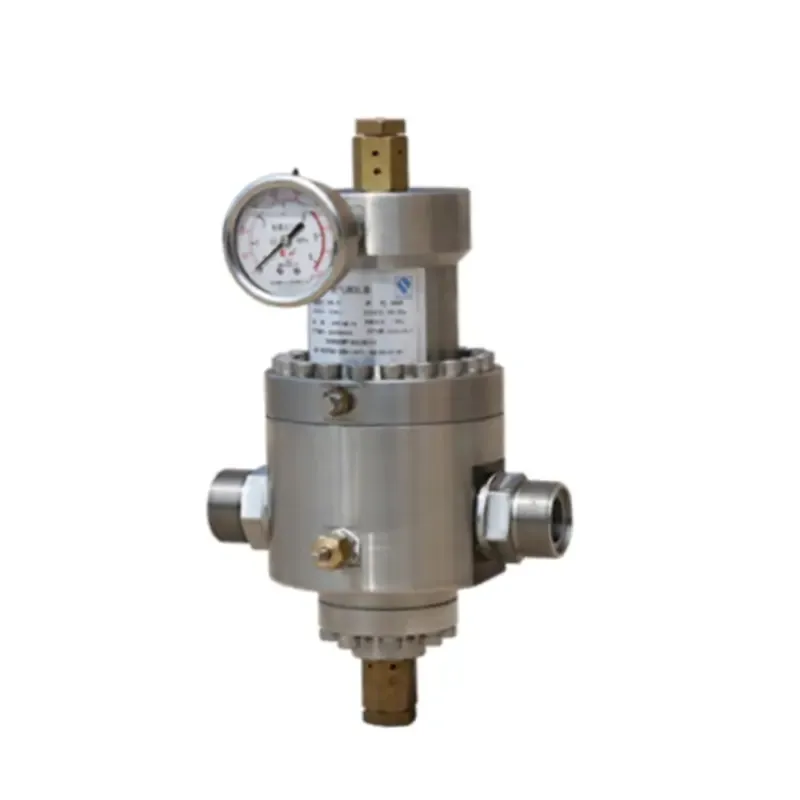
Nov . 21, 2024 04:59
Back to list
decompression skid
Understanding Decompression Skids A Vital Component in Industrial Operations
In the realm of industrial operations, the safety and efficiency of processes are paramount. Among the various tools and equipment designed to enhance these aspects, decompression skids play a crucial role. These sophisticated systems are essential for managing the pressure in fluid handling processes, particularly in the oil and gas industry. This article aims to provide an overview of decompression skids, their functionality, and their importance in ensuring operational safety.
What Are Decompression Skids?
Decompression skids are specialized equipment designed to facilitate the safe and efficient reduction of pressure in gas and liquid systems. Typically used in facilities dealing with high-pressure fluids, such skids serve as intermediaries that help to lower pressure from pipelines or storage tanks to a safe level before further processing or venting. They are often engineered to handle a variety of fluids, including natural gas, hydrocarbons, and other volatile substances.
Components of Decompression Skids
A typical decompression skid comprises several key components, each serving a specific purpose
1. Pressure Relief Valves (PRV) These are critical for maintaining appropriate pressure levels by releasing excess pressure when necessary. They act as a first line of defense against pressure surges, preventing potential damage to the system.
2. Control Valves These valves are used to regulate the flow and pressure within the skid. They help maintain optimal operational conditions by adjusting the flow rate as needed.
3. Filters and Separators To ensure the integrity of the system, filters are incorporated to remove particulates, while separators help in segregating different phases of matter, such as oil and gas. This is particularly important in preventing equipment fouling and ensuring safe operation.
4. Pressure Sensors and Gauges Monitoring pressure levels is essential in any decompression operation. Sensors and gauges provide real-time data, allowing operators to make informed decisions to maintain safety and efficiency.
5. Piping and Fittings The skid is constructed with high-quality materials capable of withstanding the harsh conditions often associated with high-pressure fluid systems. Ensuring robust and leak-proof connections is vital.
decompression skid

Functions and Applications
Decompression skids serve several essential functions in industrial applications
- Pressure Reduction They efficiently reduce the pressure of incoming fluids to manageable levels, protecting downstream equipment from damage.
- Flow Regulation By controlling the flow of fluids, these skids help maintain optimal processing conditions, ensuring that systems operate efficiently.
- Safety Features By incorporating pressure relief mechanisms, decompression skids significantly enhance safety in operations that involve high-pressure systems.
Typical applications include
- Oil and Gas Processing Skids are crucial in managing wellhead pressures during drilling and extraction, ensuring safe transportation of hydrocarbons to processing facilities.
- Petrochemical Facilities They are used to handle pressure variations during the production of various chemicals, safeguarding both equipment and personnel.
- Industrial Gas Systems In industries that utilize gases under high pressure, decompression skids serve to control and reduce pressure for safe utilization or venting.
Conclusion
In summary, decompression skids are indispensable components in various industrial operations, particularly those involving hazardous fluids. Their design not only prioritizes efficiency but also emphasizes safety, helping to prevent accidents and equipment failures that could lead to significant economic losses and environmental damage. As industries continue to evolve, the importance of advanced engineering solutions like decompression skids will undoubtedly grow, ensuring that operations remain safe and effective in an ever-changing landscape. Understanding the functionality and applications of these systems is essential for professionals working in fields related to fluid handling and process management.
Next:
Latest news
-
Safety Valve Spring-Loaded Design Overpressure ProtectionNewsJul.25,2025
-
Precision Voltage Regulator AC5 Accuracy Grade PerformanceNewsJul.25,2025
-
Natural Gas Pressure Regulating Skid Industrial Pipeline ApplicationsNewsJul.25,2025
-
Natural Gas Filter Stainless Steel Mesh Element DesignNewsJul.25,2025
-
Gas Pressure Regulator Valve Direct-Acting Spring-Loaded DesignNewsJul.25,2025
-
Decompression Equipment Multi-Stage Heat Exchange System DesignNewsJul.25,2025

